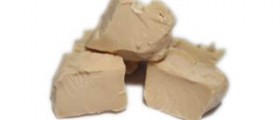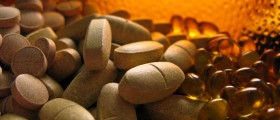Information on Dried Seaweed
Dried seaweeds are very beneficial for the human body because they are an excellent source of various essential nutrients. They are among the most important food items in some countries around the world, and have been considered as such for centuries.
Certain species of seaweed are common ingredients of many soup stocks and seasonings. The most commonly used types of dried seaweeds include nori, wakame, and kombu. The production of dried seaweeds is among the most advanced processes ins agriculture, and the process itself is very complex. The seaweed needs to be grown under the sea and requires up to 45 days to mature to a full extent.
Dried Seaweed Nutrition Facts
Dried seaweeds are remarkable sources of essential minerals because they grow under the sea. The mineral content of some species of dried seaweeds may be up to 36 percent of the plant’s dried mass.

Dried seaweeds are packed with essential minerals such as cobalt, sodium, nickel, calcium, nickel, magnesium, boron, potassium, manganese, chlorine, fluoride, sulfur, molybdenum, phosphorus, selenium, iodine, copper, iron and zinc. Dried seaweeds are actually among the best sources of iodine, and it takes only a small quantity each day, to fulfill the daily requirement for iodine.
There are certain regions in which people consume more than a gram of seaweed on a regular daily basis. The human body can adapt to a high intake of iodine very quickly. Iodine is one of the integral parts of thyroid hormone production, and it is in charge of the proper development and growth of the human body. Overconsumption of iodine may lead to certain unwanted medical conditions and problems.
Dried seaweeds may also contain up to 7 percent of calcium of their dry mass of calcium. That means that a gram of dried seaweed may contain up to 70 milligrams of calcium. Certain species of dried seaweeds may contain up to 40 percent of the proteins of their dried mass. Dried seaweeds are also excellent sources of certain types of vitamins, such as vitamin A, vitamin B12, and vitamin C.
- Edible seaweeds contain polysaccharides (starch, laminarin, floridoside, cellulose, hemicellulose, and hydrocolloids such as agar, alginate, and carrageenan), proteins, minerals (Na, Fe, Mg, Ca, I, K, Zn, F, and Se), vitamins (A, B1, B2, B9 (folic acid), B12, C, D, E, and K), antioxidants (vitamin C and E, polyphenols, sulphated polysaccharides, carotenoids, sterols, phlorotannins, catechins and proteins), polyphenols (catechins, flavonols, and phlorotannins) and low amounts of fat, which are predominantly mono and polyunsaturated fatty acids with low caloric value.
- Seaweeds are rich in protein (up to 47%) and contain bioactive compounds such as peptides, glycoproteins, lectins, mycosporine-like amino acids, and phycobiliproteins. At present, seaweed proteins or purified protein fractions are rarely used in functional food development.
- The quality of a protein can be determined by amino acid composition, proportion or ratios, digestibility, and bioavailability. Since different methods with various standard patterns are used to assess protein quality, it is difficult to compare the published data.
- Protein quality does not solely depend on the amino acid profile. Even with an excellent amino acid profile, the protein may have lower nutritional value if the digestibility is low due to poor bioavailability. Therefore, the bioavailability of proteins is an essential factor in determining protein quality, and can be described as the degree to which amino acids or small peptides from a test protein consumed by a living organism are finally transported across the intestinal membrane and into the body.
- Though seaweed peptides are predicted as non-toxic, several sequences have been reported as allergenic. Gammaridean amphipods and caprellid amphipods inhabit Porphyra spp. (nori) and can mix with nori sheets during harvesting and are consequently found in dried nori sheets, resembling small stones.
Dried Seaweed Health Benefits
Dried seaweeds can be of great help in reducing the levels of bad cholesterol in the blood and increasing the levels of good cholesterol in the blood. They are efficient in reducing acne, repairing the tissues, preventing heart attacks, reducing the risk of rheumatoid arthritis, and preventing diabetes.

















Your thoughts on this
Loading...